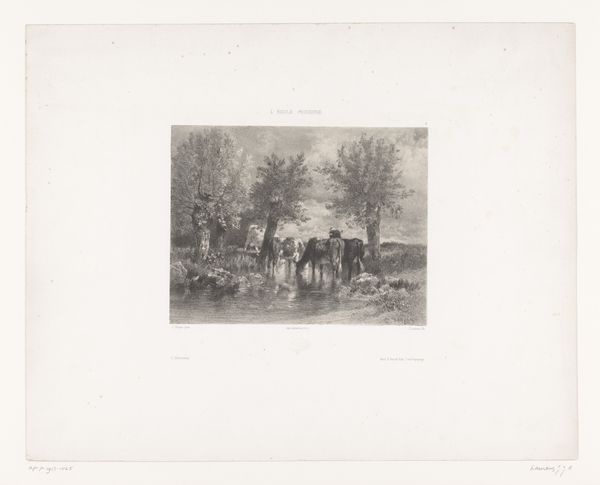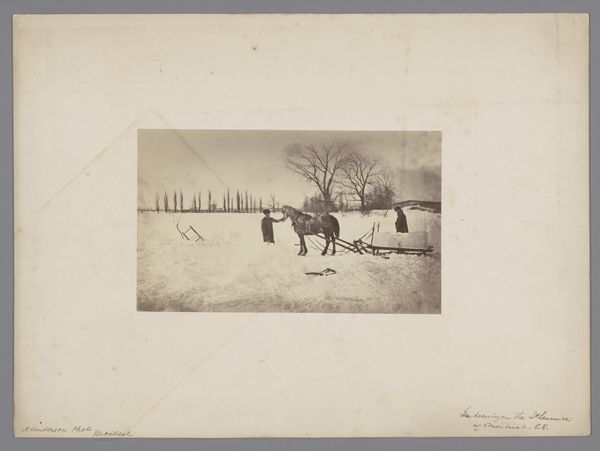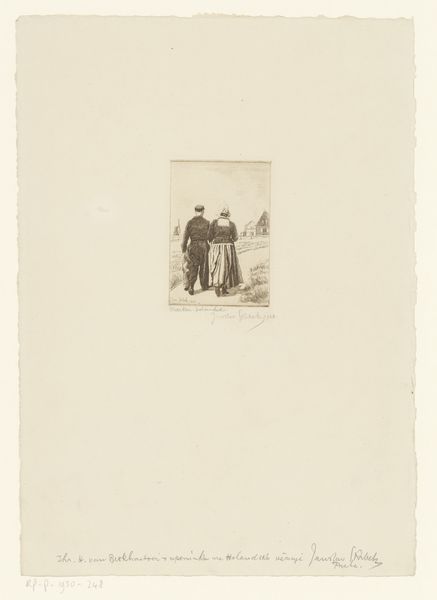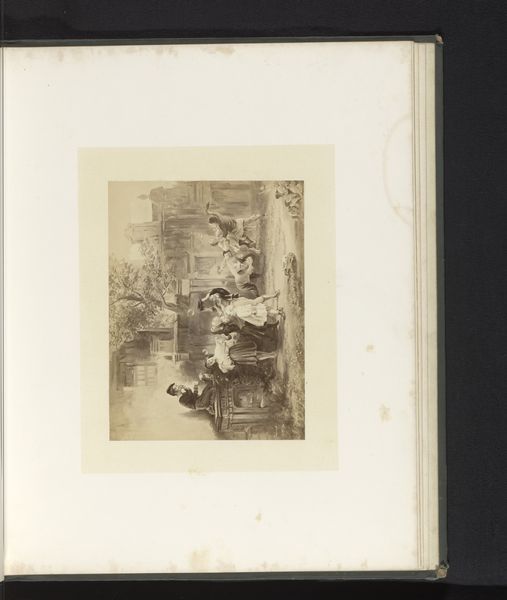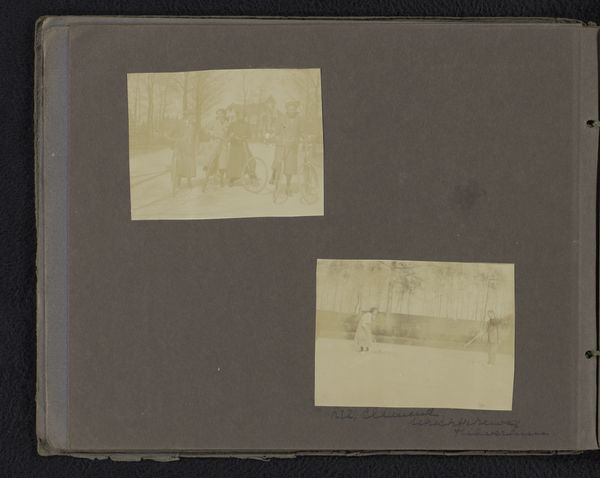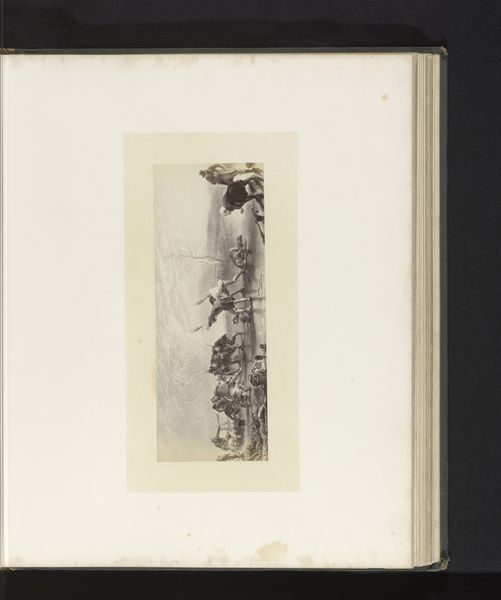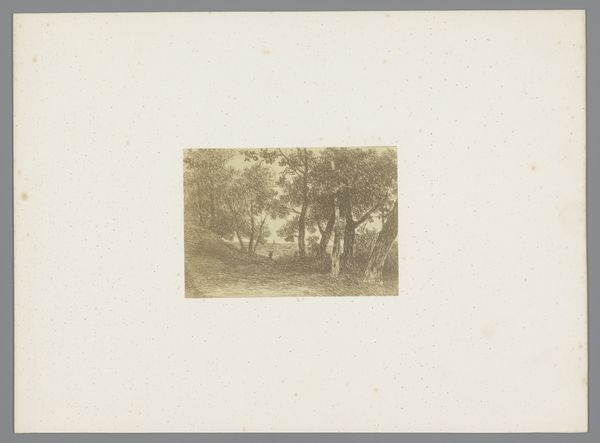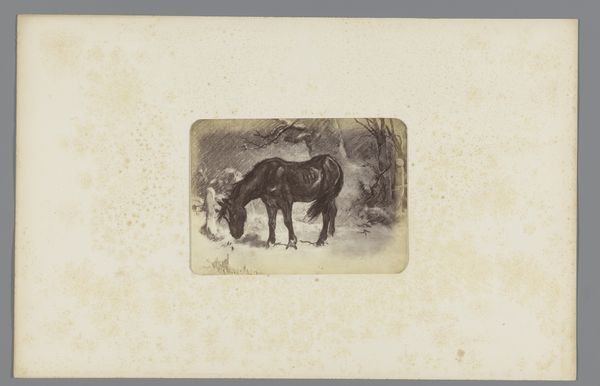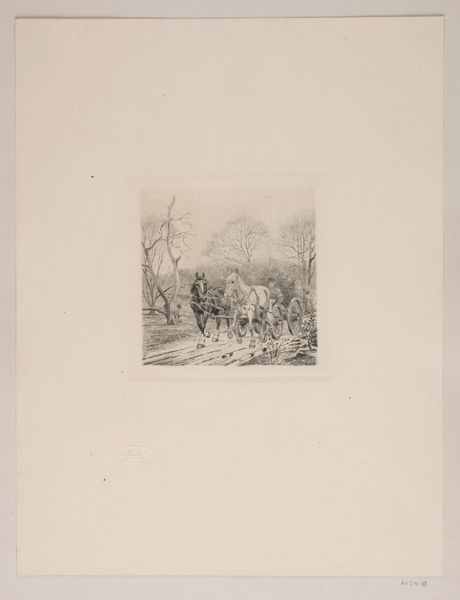
drawing, print, etching, paper, engraving
#
drawing
#
ink paper printed
# print
#
etching
#
landscape
#
figuration
#
paper
#
horse
#
genre-painting
#
engraving
Dimensions: height 110 mm, width 138 mm
Copyright: Rijks Museum: Open Domain
Editor: Here we have Adolf Eduard Herstein's "Boer met twee paarden," created sometime between 1879 and 1932. It’s an etching, engraving, and print on paper. It feels so... intimate. The composition is almost like a snapshot, capturing a fleeting moment. What strikes you most about this work? Curator: Oh, that feeling of intimacy is spot on! It reminds me of stumbling upon a quiet scene in the countryside, maybe a memory half-forgotten. I love how Herstein uses the etching to create a world of textures, like you could almost feel the rough coat of the horses. Doesn't it remind you of those old photographs that have a beautiful sense of authenticity? It really gives this the vibe of another place and time. What about the positioning of the figures - how do they sit together within the frame? Editor: Good point, their stillness seems significant somehow. It almost gives the sense of two individuals working together to care for their animals, which in turn allows them to survive. So it creates an overarching mood. It sounds idyllic when described in such ways. Curator: Indeed. There is also something to be said for how landscape works, since we tend to assume the animals are positioned where they are as a result of the layout. Are there aspects you find challenging? Editor: For me, it's the scale. It's quite small, isn't it? It almost feels like a secret. It's beautiful, but I wonder if it would have had a different impact if it were larger? Curator: A larger scale would definitely shift the experience! Its current size compels us to get up close and inspect its fine lines and tiny detail and make the piece have its own intimate, quiet, mood, which in turn, allows you, the observer, to explore their world in this intimate landscape. It brings in your own emotions, perhaps. Editor: Absolutely. I'll definitely be paying more attention to scale from now on. It really shapes how we engage with art, doesn’t it? Curator: It does, and seeing how Herstein manipulated it here opens my mind up to how the landscape gives it a personal expression.
Comments
No comments
Be the first to comment and join the conversation on the ultimate creative platform.

